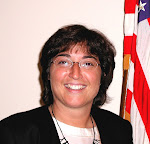Tuesday, February 28, 2012 – Santarem, Brazil
We were up early for a coffee talk with the cast members of the Prinsendam singers and dancers; they also gave us a nice back stage tour. We had an early lunch as we were supposed to DOCK at 12:00 but we ended up tendering. There was total chaos as they put a pontoon beside our ship and tried to let some of the tour groups go directly from the pontoon to their riverboat. And then we had to wait until the ship’s tenders were ready to go so we were not off the ship until 2:30!! They did extend our departure time an hour but it did not help us as we had a dinner reservation at 6PM which could not be changed.
There was the German ship, AIDA, in port with us again. They were docked so they must have paid more for that privilege!
Santarem is the Amazon’s third largest city (population 200,000), located on the confluence of the creamy-brown Amazon River and the reddish-black Tapajos River; you can clearly see where the black and dirty/muddy brown rivers meeting. They claim the roots of civilization began in this area 12-13,000 years ago. Soya bean plantations are plentiful. Cargill is working on genetically modifying the soya bean. The economy today is based on rubber, soy and hardwoods, plus Brazil nuts, black pepper, mangoes, jute and fish.
A large market area was set up for our arrival and a bus took us to the center of town, finding every pot hole it could during the 15 minute drive. We found the cathedral (a blue church), the fish market and several stalls of household items but nothing really for tourists. Priced some taxis to take us out of town but had trouble making them understand where we wanted to go. Finally, they agreed to our price but we should have known better! We went to a park in the city – I had them read the paper that we wanted to go 12 miles OUTSIDE the city and they kept saying yes, yes…well, no, no. So we paid him a portion of what he requested and we went to try to find a bus back to town. And, then the moto-taxis arrived! Motorcycle taxis! We had wanted to try them anyway, so it was perfect timing! We each had our own motorcycle and driver and helmet and off we went. The bumps on the road were much better now as we were able to swerve around them and it was a great breeze and great fun! Make lemonade when you get lemons, right??
So then we shopped at the pier markets and J had made her own way to the market stalls via tender so we all went back together. We had a reservation in the Italian restaurant (they are trying it out in the Lido section for about a week) and it was very nice. Then Hanna Starosta played the violin for the evening’s entertainment.
We are sailing the Amazon now and it is just as brown and muddy as you see in photos. I guess I thought it might be clearer and cleaner than the photos but it is not; the many riverboats are constantly stirring up the bottom and it is amazing how wide it is in most areas. Our ship must seem massive compared to the riverboats sailing near us.
Yesterday we crossed the equator. Latitude lines are one of two measurements needed to locate points precisely on the earth’s surface. Running north-south, longitude lines have their zero-point running through the Royal Greenwich Observatory in England. As the center point of the earth, the equator is also the center of the tropics. The tropics are the area lying between the Tropic of Cancer and the Tropic of Capricorn. The sun’s heat near the equator easily evaporates water from the oceans (hence the very humid days!). This is also why there are rain forests at the equator. The sun’s rays are unaffected by the tilt of the earth, so the area is always exposed to the sun and receives direct solar rays year-round, regardless of season. The equator marks a turning point for the seasons, which are reversed in the northern and southern hemispheres. When it is spring in the northern hemisphere, it is fall in the southern hemisphere.
“The world is a book, and those who do not travel only read a page.” – St. Augustine
skip to main |
skip to sidebar

Luisa of Preferred Travel, Essex, CT // LGTravel@verizon.net
Author

Followers
Blog Archive
-
▼
2012
(40)
-
▼
February
(14)
- Boca de Valeria, Brazil
- Santarem, Brazil
- Belem, Brazil
- sea days and Fortaleza, Brazil
- Cabadelo and Joao Passao, Brazil
- 2nd day of CARNAVAL
- Vitoria, Recife and CARNAVAL!
- Buzios, Brazil
- Rio de Janeiro, Brazil
- Montevideo, Uruguay
- Buenos Aires, Argentina
- On the way to the Falkland Islands
- Antarctica!
- Punta Arenas, Chile and missed port!
-
▼
February
(14)
About Me
- Luisa / Preferred Travel, Essex, CT
- Travel agent and theatre-lover. Always ready for the next adventure! Are you??